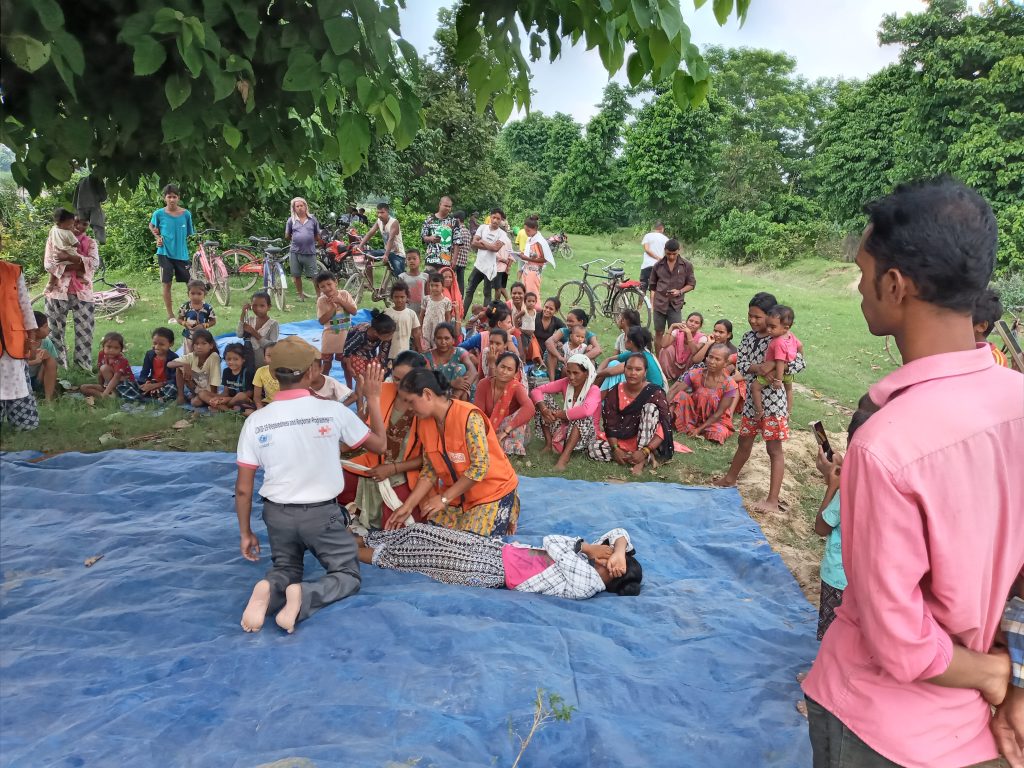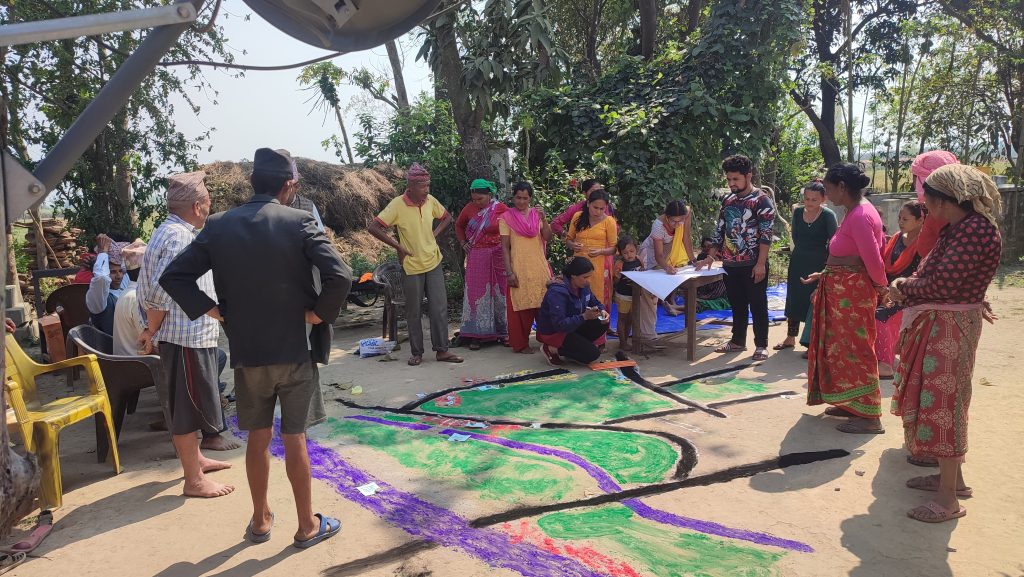At the heart of disaster risk management is anticipatory action, which provides a proactive strategy for reducing the catastrophic effects of disasters. The 3rd National Dialogue on Anticipatory Action (AA), which took place in Kathmandu on May 9th and 10th, recently offered an important forum for discussing and improving plans for enhancing readiness and response during the monsoon season.
This gathering of experts, policymakers, and stakeholders underscored the urgency of integrating anticipatory measures into disaster risk management frameworks to effectively protect vulnerable communities. At present, the National Disaster Risk Reduction and Management Authority (NDRRMA) is developing a national framework for anticipatory action. The participants of the event mentioned that the platform has proven important to brainstorm creative ideas and provide inputs to the widely anticipated national framework.
Key takeaways and strategies
The significance of early warning systems and their enhancement was one of the main lessons to be learned from the discussion. To take early action, precise and timely forecasts, together with potential impact modeling, are a must. This helps to act beforehand by predicting the threats that come along with monsoons such as floods, inundation, landslides, and waterborne infections. At present, it is visible that the stakeholders have been able to accurately anticipate the time and place of potential disasters, thanks to the advancements in technology at the Department of Hydrology and Meteorology (DHM).
Dr. Archana Shrestha, Deputy Director General at DHM highlighted the importance of communicating the certainty and uncertainty of forecasts to the stakeholders and the public. She mentioned that it is important to collaborate with NGOs and municipalities so that the technical forecasts are translated into actionable information.
One of the backbones of effective anticipatory action is community engagement. Providing community members with the required resources and training helps them to take proactive actions that helps not only to protect themselves but also their communities. This helps to reduce loss and damage significantly. Working with the communities for early action includes pre-positioning emergency supplies, strengthening communication networks and having proper evacuation plans.

Collaborative partnerships were also highlighted as essential in implementing anticipatory action. Bringing together government agencies, NGOs, private sector entities, and international organizations fosters a holistic approach to disaster preparedness. These collaborations help to combine resources, knowledge, and best practices which results in the efficacy of proactive measures as a whole.
For humanitarian organizations to respond to emergencies before they happen, Michael Kroft, the UNESCO Representative to Nepal, emphasized the significance of creating a thorough AA framework for Nepal. He mentioned that AA is faster, more dignified, and cost-effective than post-event responses and hence this should be prioritized.
Application to the monsoon season
As we approach the monsoon season, the learnings from the dialogue are very suitable and significant. As monsoons relate to life threatening hazards, it is mandatory to have proactive planning and response strategies. When we talk about initiating anticipatory action, it is about involving the relevant authorities to make use of resources and deploying the reaction teams to high-risk areas using predictive methods.
Proactive efforts in flood-prone regions include early evacuation drills, strengthening infrastructure at risk, and building temporary shelters with basic supplies. We can lessen the impact of disasters if emergency relief materials such as water, food, medicines and sanitation kits, among others are made ready to send to the affected areas as soon as possible.

Anil Pokharel, CEO of NDRRMA emphasized various efforts of NDRRMA such as the development of a national multi-hazard early warning system and the approval of the national gender and social inclusion strategy that facilitates anticipatory action. To address the disaster related challenges, Pokharel highlighted the importance of adequate budget allocation, policy reform and investment in modern technology.
He emphasized participation in initiatives for early warning such as the “Early Warning for All” program led by the United Nations and in collaboration with other international partners. Moreover, he discussed the benefits of integrating disaster risk management into infrastructure projects like the Upper Arun hydropower project for anticipatory action.
Likewise, the Ministry of Federal Affairs and General Administration (MoFAGA) unveiled the Monsoon Preparedness and Response Plan 2081 to deal with disaster incidents on June 5th. According to the Plan, it is estimated that 181,000 people and over 400,000 households will be affected by monsoon-related activities this year. During the meeting held at the ministries with various stakeholders on June 6, it was informed that cooperation of various ministries and organizations will be sought to ensure the effective implementation of preparedness and response efforts.
We urge all the development partners to update their status of stock and how they can support the monsoon preparedness as early as possible.
Mohan Kumar Ghimire, early recovery cluster lead at MoFAGA
It is evident that increasing pre-event investment in flood resilience will reduce the losses and damage caused by floods. The Zurich Flood Resilience Alliance research shows that every $1 invested in flood risk reduction has been documented to save on average $5 in future losses. As anticipatory action integrates climate adaptation strategies into local development plans, it plays a vital role in resilience building efforts. The strategies include improving drainage systems, promoting sustainable land use practices, promoting monsoon resilient crop varieties among others. Many organizations like Mercy Corps, Practical Action, Dan Church Aid (DCA), CARE International and Action Aid, among others have been effectively working in these areas.
Challenges
It is not all rosy though. With no national framework for anticipatory action, multiple organizations are using their version of anticipatory actions. There are still very few identified lists of anticipatory actions beyond cash interventions. Many local governments do not prefer cash interventions as most of these interventions are targeted and avoid blanket approaches as targeted approaches are not conducive for managing the political relationships. This is especially because there is a lack of trust in the forecasts from DHM and the list of potential impact populations identified. Numerous small river systems that are often unnoticed but are the scenes of major flood impacts lack historical data on river discharge, hydro-meteorological parameters, and high-resolution terrain models which are basics for hazard modelling.
The way forward
The Third National Dialogue on anticipatory action has laid a strong foundation for planning and improving monsoon preparedness through proactive initiatives. Different stakeholders including the communities, participated in the dialogue led by NDRRMA and NGOS with Mercy Corps and DCA serving as co-leads of the Anticipatory Action Community of Practice in Nepal. The interactions have proven that the effectiveness of AA lies in the successes, difficulties, and experiences of proactive, action-focused programs.
There is no doubt that embracing AA helps to increase community resilience, promote sustainable development, and lessen the immediate risks posed by natural disasters. In the face of increasingly unpredictable weather patterns and the effects of climate change, continued collaboration, innovation, and investment in anticipatory measures will be key to safeguarding lives, livelihoods, and infrastructure.

The presenters highlighted minimizing the gap between existing funding mechanisms and the needs of AA. Piush Kayastha, who oversees European Union Civil Protection and Humanitarian Aid, proposed connecting climate and disaster funds with AA initiatives to ensure adequate financial resources for preparedness and response, fostering public-private partnerships to harness innovative technologies for early warning and response and incorporating multi-hazard approaches and scaling up collaborative efforts across sectors to enhance resilience and preparedness.
As Nepal looks forward to exploring existing government mechanisms to promote shock-responsive social protection to target the most vulnerable populations, strengthening the national volunteer system, and ensuring a standardized framework with clearly distinguishing roles and responsibilities across all tiers of government with due policy reviews, the future does look bright.
It is also important to use simplified language, raise awareness, establish robust communication channels, and promote the citizen science approach for monsoon preparedness. Inclusive communication, advocating for the integration of local languages, songs, mural arts, participatory mapping, Interactive Voice Response, mobile games, drama, jingles, social media, SMS, household-level risk mapping, and visualization techniques are crucial for risk communication, be it during monsoon or any other disasters.
As stakeholders across sectors continue to apply these insights and strategies, we move closer to realizing a future where anticipatory action serves as a cornerstone of disaster risk reduction, ensuring safer and more resilient communities in monsoon-prone regions and beyond.
This article was originally published by Republica on 8th July 2024. You can view the original here.

Comments